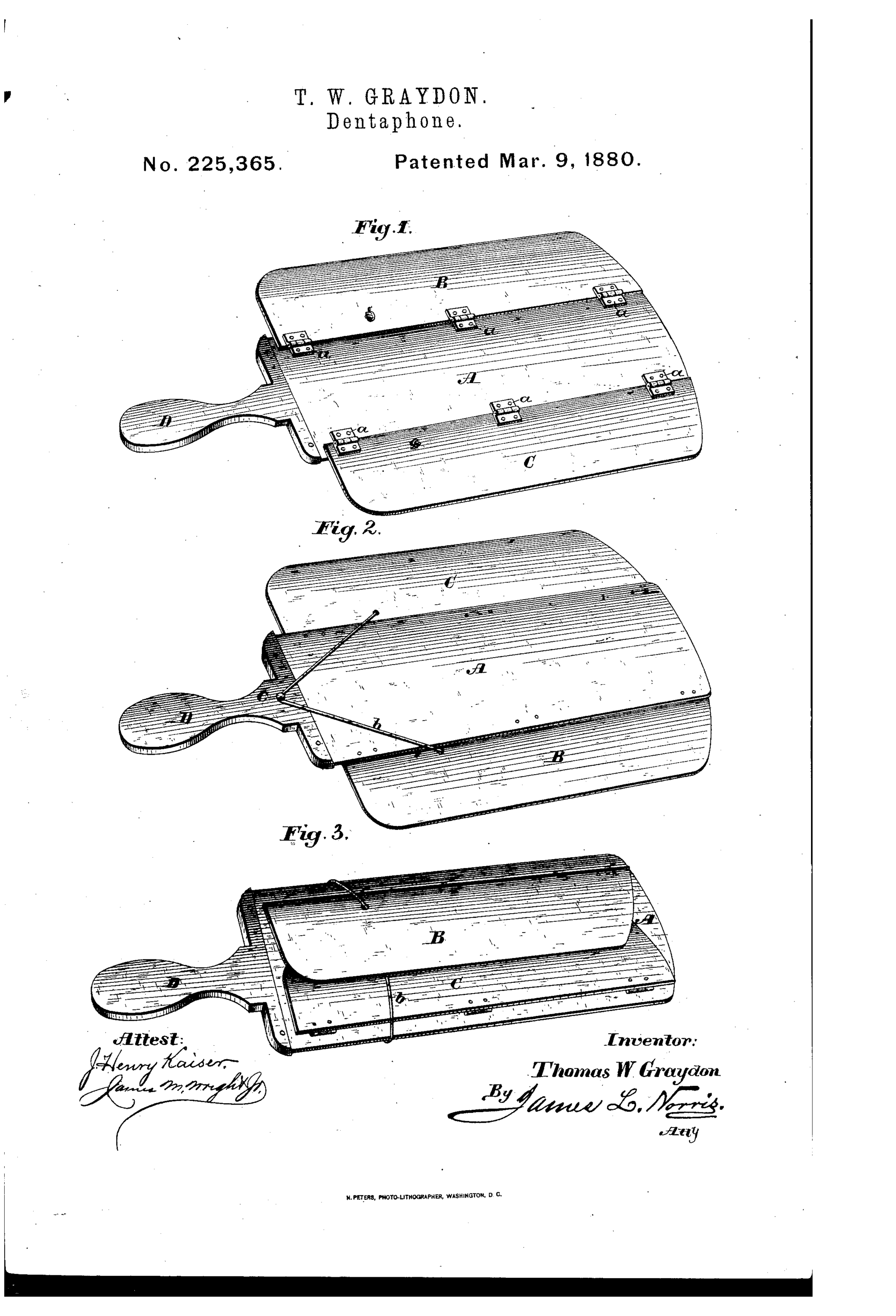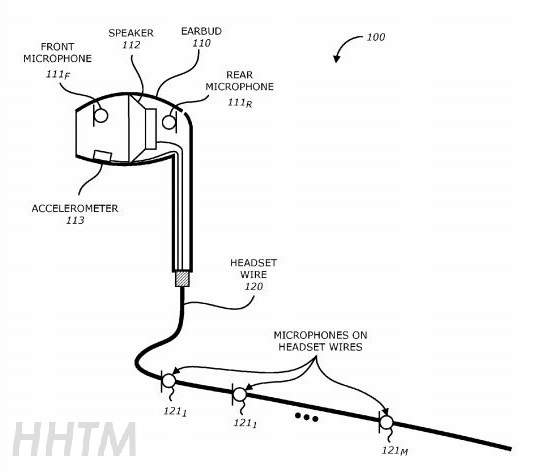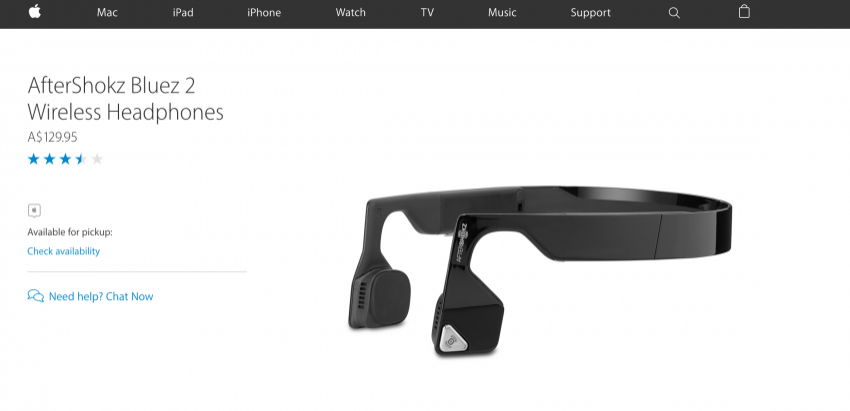Who "invented" bone conduction, why it is used and how it is safe for hearing
Every year, the more Aftershokz headphones we sell, the more questions we get about how it works, how safe it is, how long it has been “tested”, and so on.

We are constantly reviewing articles and materials on this topic, and every year something new is discovered. And, by the way, not always positive! To be honest to the end, we decided to clarify a couple of controversial points in the light of the latest materials found.
A little bit of history.
Probably, the technology owes its popularity to Beethoven’s figure, but the discovery of this method of transmitting sound came from a much earlier period. They associate him with the names Vesalius (1514 - 1564); Fallopia (1523 - 1562); Eustachia (1510 - 1574). Recently, however, doctors are inclined to believe that the first work, in which there was a more or less detailed description of bone conduction, was the book by Gerolamo Cardano “De Subtilitate”. Probably (as far as GoogleTranslate can help here), we can talk about page 709 of this digitization. Without pretending to possession of ancient languages and referring to other sources, we note that, according to these data, the book deals with the possibility of receiving sound by eating a wooden object.

As can be judged by the dates, scientists worked at the same time, and it is unlikely that they could pass the gold medal to the championship for someone right now. However, if we talk about the first published work with a theoretical description of the method, it is “De Subtilitate”.
At the same time, it is worth noting that at that time there was no clinical value in these discoveries: all descriptions were experimental, something like: “but you can also like this, but it’s not very clear yet, but why”.
For the first time, Hieronymus Kapivacci looked in 1589 with a diagnostic look at bone conduction .

In his experiments he used a musical instrument, to the strings of which a steel rod was connected. If a person heard a sound, then Kapivacchi concluded that the disorder at the level of the eardrum, if not heard, is affected by the auditory nerve.
On the same PDF-page, a number of other names are mentioned: such scientists as Thomas Willis , known as a doctor who discovered diabetes and an opium lobbyist, one of the founders of forensic medicine Felix Plter and others, had a hand in bone conduction . However, the first diagnostic attempts are associated with the name Kapivacci.
Such an experiment was not "accepted with a bang." For example, one of Fallopian students, Volkher Koiter, treated him with doubt.one of the founders of embryology. In his opinion, the sound was transmitted mostly through the Eustachian tubes, and only after some time the Capivacci experiment was confirmed.
It was confirmed by Gishard Joseph Duverny , whose main work “Otology” is dedicated to hearing. Bone and fractures Duvernay worked "closely", and it was he who owned one of the first complete descriptions of osteoporosis.
Such "dental" bone conduction will be known for many years to come, and here again it is important to remember Beethoven. Also, in a note about the History of the Study of the Brain, we mentioned that one of the first patents on this topic described a device in the form of a fan, which also needed to be bitten with teeth to improve the audibility of sounds.

In other words, bone conduction cannot be called a “poorly studied phenomenon”, just as you can’t call it technology that does not represent value. So the question of what to do with it was a matter of time. But the time has come very, very recently. She came and brought with her a lot of questions, perhaps the most important of which is how safe it is.
A year ago we answered some of them . However, since that time something has changed, new articles and papers on this topic have appeared, so some answers should be reconsidered.
1. Security in the city
Consumer headsets are a kind of "heirs" of military equipment, where the main value of bone conduction of sound is that the ears remain open, and this allows you to respond to surrounding sounds.

At the same time, users do not always correctly interpret the key word for this sentence “to react”. The sound in the background somehow allows you to hear the dog barking, the signal of the car, the shout of a passer-by, if you drop the wallet, but do not save the full picture of what is happening.
In one of the studies conducted a corresponding experiment. The results also had to admit that the localization of environmental sounds, of course, is not as accurate as if the headphones were not used at all. A certain decrease in sensitivity to the real world will somehow persist, but at the same time the headphones perform their task: you will hear the outside sound.
2. Safety for the body
The most problematic question today. We often come across comments that bone conduction is very, very harmful, every time we request research from commentators, each time we get silence in response.
The only way so far with which we can disprove this provision is the absence of inverse evidence. For all the time searching for relevant information on requests, such as what damage bone conduction causes, nothing was found.
On the contrary, passive bone conduction today is a common tool for the correction of hearing, is actively used in clinical medicine, including for children. Usually criticize the "vibrations" that should cause something there, but after all, any sound - vibrations?
There is also the thesis that bone conduction actually destroys bones. Here, perhaps, there is a substitution of concepts: the fact is that early hearing aids based on bone conduction were implanted. And titanium, with the help of which the “implantation” is carried out, could take root in different ways, sometimes there were cases of rejection, which obviously had a negative effect on bone tissue.

In this case, bone conduction could be recognized as an aggravating factor, but for consumer headphones and headsets there is no such problem.
3. Safety for hearing
This is a trick. And while it is not entirely clear who began to replicate it, even though we, following Aftershokz, came across this trick. Now on pagewhere there was this entry, after additional comments from the scientific community, there is nothing on the official website.
There is also a book : “Computer for people with disabilities”, where in the section on bone conduction headphones you can also find the following phrase:

Compare what text was previously on the Aftershokz website:
And this is not entirely true. More precisely, and so, and not so. In general, everything is much easier. As specified in one of the materials, any headphones are not powerful enough to damage the eardrum. In other words, both bone-conductive headphones and ordinary headphones are equally safe. And - in the same place - it makes sense to read further, where it is said that both ordinary and bone headphones are equally dangerous, but for a snail.
In other words, according to the latest data, bone conduction for hearing quality, unfortunately, does not give.
4. That's when Apple does, then we'll talk.
About the fact that technology is not viable, also have to respond periodically. And the “marker” about Apple is no joke: many people really believe that while Apple is not interested in something, there is no future. By the way, this was the case, for example, with the startup Bragi Dash, which opened the niche of “real wireless headphones”, but after the release of AirPods they closed themselves ...
In fact, at the patent level , Apple has headphones with bone conduction sound.

Also in favor of the fact that the most expensive company in the world is interested in a similar method of sound transmission, it is also said that one of the Aftershokz versions was once sold at the Apple Store, which, by the way, made it possible for users to receive such credibility. Now Aftershokz is the leader in its category.

Conclusion
In principle, to date, our knowledge about bone conduction headphones has not changed much, but they “became” no more dangerous and no safer than other headphones, they still allow us to respond to signals from the outside world, and this is in demand, probably, in dozens of models : from cycling and jogging to watching TV shows at home or as a headset. At the same time, the perception of sounds will not be the same as if a person was without headphones, but in general it sounds logical, which is surprising.

We are constantly reviewing articles and materials on this topic, and every year something new is discovered. And, by the way, not always positive! To be honest to the end, we decided to clarify a couple of controversial points in the light of the latest materials found.
A little bit of history.
Probably, the technology owes its popularity to Beethoven’s figure, but the discovery of this method of transmitting sound came from a much earlier period. They associate him with the names Vesalius (1514 - 1564); Fallopia (1523 - 1562); Eustachia (1510 - 1574). Recently, however, doctors are inclined to believe that the first work, in which there was a more or less detailed description of bone conduction, was the book by Gerolamo Cardano “De Subtilitate”. Probably (as far as GoogleTranslate can help here), we can talk about page 709 of this digitization. Without pretending to possession of ancient languages and referring to other sources, we note that, according to these data, the book deals with the possibility of receiving sound by eating a wooden object.

As can be judged by the dates, scientists worked at the same time, and it is unlikely that they could pass the gold medal to the championship for someone right now. However, if we talk about the first published work with a theoretical description of the method, it is “De Subtilitate”.
At the same time, it is worth noting that at that time there was no clinical value in these discoveries: all descriptions were experimental, something like: “but you can also like this, but it’s not very clear yet, but why”.
For the first time, Hieronymus Kapivacci looked in 1589 with a diagnostic look at bone conduction .

In his experiments he used a musical instrument, to the strings of which a steel rod was connected. If a person heard a sound, then Kapivacchi concluded that the disorder at the level of the eardrum, if not heard, is affected by the auditory nerve.
On the same PDF-page, a number of other names are mentioned: such scientists as Thomas Willis , known as a doctor who discovered diabetes and an opium lobbyist, one of the founders of forensic medicine Felix Plter and others, had a hand in bone conduction . However, the first diagnostic attempts are associated with the name Kapivacci.
Such an experiment was not "accepted with a bang." For example, one of Fallopian students, Volkher Koiter, treated him with doubt.one of the founders of embryology. In his opinion, the sound was transmitted mostly through the Eustachian tubes, and only after some time the Capivacci experiment was confirmed.
It was confirmed by Gishard Joseph Duverny , whose main work “Otology” is dedicated to hearing. Bone and fractures Duvernay worked "closely", and it was he who owned one of the first complete descriptions of osteoporosis.
Such "dental" bone conduction will be known for many years to come, and here again it is important to remember Beethoven. Also, in a note about the History of the Study of the Brain, we mentioned that one of the first patents on this topic described a device in the form of a fan, which also needed to be bitten with teeth to improve the audibility of sounds.

In other words, bone conduction cannot be called a “poorly studied phenomenon”, just as you can’t call it technology that does not represent value. So the question of what to do with it was a matter of time. But the time has come very, very recently. She came and brought with her a lot of questions, perhaps the most important of which is how safe it is.
A year ago we answered some of them . However, since that time something has changed, new articles and papers on this topic have appeared, so some answers should be reconsidered.
1. Security in the city
Consumer headsets are a kind of "heirs" of military equipment, where the main value of bone conduction of sound is that the ears remain open, and this allows you to respond to surrounding sounds.

At the same time, users do not always correctly interpret the key word for this sentence “to react”. The sound in the background somehow allows you to hear the dog barking, the signal of the car, the shout of a passer-by, if you drop the wallet, but do not save the full picture of what is happening.
In one of the studies conducted a corresponding experiment. The results also had to admit that the localization of environmental sounds, of course, is not as accurate as if the headphones were not used at all. A certain decrease in sensitivity to the real world will somehow persist, but at the same time the headphones perform their task: you will hear the outside sound.
2. Safety for the body
The most problematic question today. We often come across comments that bone conduction is very, very harmful, every time we request research from commentators, each time we get silence in response.
The only way so far with which we can disprove this provision is the absence of inverse evidence. For all the time searching for relevant information on requests, such as what damage bone conduction causes, nothing was found.
On the contrary, passive bone conduction today is a common tool for the correction of hearing, is actively used in clinical medicine, including for children. Usually criticize the "vibrations" that should cause something there, but after all, any sound - vibrations?
There is also the thesis that bone conduction actually destroys bones. Here, perhaps, there is a substitution of concepts: the fact is that early hearing aids based on bone conduction were implanted. And titanium, with the help of which the “implantation” is carried out, could take root in different ways, sometimes there were cases of rejection, which obviously had a negative effect on bone tissue.

In this case, bone conduction could be recognized as an aggravating factor, but for consumer headphones and headsets there is no such problem.
3. Safety for hearing
This is a trick. And while it is not entirely clear who began to replicate it, even though we, following Aftershokz, came across this trick. Now on pagewhere there was this entry, after additional comments from the scientific community, there is nothing on the official website.
There is also a book : “Computer for people with disabilities”, where in the section on bone conduction headphones you can also find the following phrase:

Compare what text was previously on the Aftershokz website:
Scientific studies have shown that using normal headphones can help reduce hearing and damage the eardrum. Since AfterShokz headphones do not use eardrums to transmit sound, they provide consumers with high-quality stereo listening, while reducing the risk of damage to the eardrum.
And this is not entirely true. More precisely, and so, and not so. In general, everything is much easier. As specified in one of the materials, any headphones are not powerful enough to damage the eardrum. In other words, both bone-conductive headphones and ordinary headphones are equally safe. And - in the same place - it makes sense to read further, where it is said that both ordinary and bone headphones are equally dangerous, but for a snail.
In other words, according to the latest data, bone conduction for hearing quality, unfortunately, does not give.
4. That's when Apple does, then we'll talk.
About the fact that technology is not viable, also have to respond periodically. And the “marker” about Apple is no joke: many people really believe that while Apple is not interested in something, there is no future. By the way, this was the case, for example, with the startup Bragi Dash, which opened the niche of “real wireless headphones”, but after the release of AirPods they closed themselves ...
In fact, at the patent level , Apple has headphones with bone conduction sound.

Also in favor of the fact that the most expensive company in the world is interested in a similar method of sound transmission, it is also said that one of the Aftershokz versions was once sold at the Apple Store, which, by the way, made it possible for users to receive such credibility. Now Aftershokz is the leader in its category.

Conclusion
In principle, to date, our knowledge about bone conduction headphones has not changed much, but they “became” no more dangerous and no safer than other headphones, they still allow us to respond to signals from the outside world, and this is in demand, probably, in dozens of models : from cycling and jogging to watching TV shows at home or as a headset. At the same time, the perception of sounds will not be the same as if a person was without headphones, but in general it sounds logical, which is surprising.
If you need Aftershokz headphones
В категории наушников и гарнитур лидером по-прежнему остается компания Aftershokz, и если вы заинтересованы в том, чтобы попробовать использовать такие наушники, то мы предлагаем скидку 20% на любую модель до конца недели: HBRAFT.
